What is diamond certification?
Created by the Gemological Institute of America (GIA), diamond certification, or diamond grading, is a system for evaluating the quality of a diamond based on its carat, cut, clarity, and color (the 4Cs). Diamond certification standardizes the diamond market, provides a common language now used worldwide, and assists buyers in understanding exactly why the diamond they like for an engagement ring might be twice the price of another that is the same carat weight.
When a diamond is certified, it means it has been verified as 100% natural or enhanced. Certification also means that the quality of the diamond (its 4Cs characteristics) meets an established standard. Diamonds should only be certified by qualified, experienced gemologists and laboratories such as the GIA, the American Gem Society (AGS), the International Gemological Institute (IGI), and other independent, reputable jewelry and gemstone organizations established for promoting high standards in jewelry.
The certification itself that you receive is a document that includes details about the diamond’s cut quality, color grade, carat weight, clarity, length, width, and other characteristics. The certificate is the best proof of the type and quality of the diamond you are purchasing. Without exception, diamonds worth $1000 or more should come with a certificate from a reputable lab. It’s important to note that saying a diamond comes from a GIA-certified gemologist is not the same as actual diamond certification. The diamond certification indicates that the diamond has actually been certified, whereas a GIA-certified gemologist is someone who has taken classes from the GIA. The GIA certifies diamonds starting at .15 carats.
Another important consideration is the lab that provides the diamond certification. Each lab or institute grades and describes diamonds a little differently, which can affect the price and value of your diamond. Ensure that the diamond certificate you receive for your diamond comes from a certified entity for grading gemstones such as the GIA, AGS, IGI, and the EGL (European Gemological Institute).

Diamond Viewed Through A Loupe ( 10 x magnification)
As one of the most common descriptors of a diamond, the term ‘eye clean’ (or ‘eye clear’) means that a gemstone has no flaws visible to the naked eye when viewed from the table position (top down) at a distance of about 6” to 12” from your face.

Eye-clean dimaonds look high quality to the naked eye
A diamond that is eye clean, for example, will have inclusions and blemishes under magnification, but they will not be visible to the unaided eye. A gemstone’s clarity classification is based on how ‘eye clean’ it is, and these diamonds offer amazing value to a buyer.

Eye-clean stones inclusions can only be seen under 10x magnification
‘Inclusions’ are microscopic imperfections in diamond structure that result from exposure to extreme pressure during formation. When a diamond has inclusions present it lowers the clarity of the diamond. These inclusions can be present inside the diamond since birth (at the time of formation), during manufacturing, or as a result of daily wear and tear. The more inclusions a diamond has, the lower the clarity and subsequently, the value. The highest possible clarity rating by the IGI is ‘IF’ for ‘internally flawless’, and ‘Fl’ – ‘Flawless’ if the diamond is being graded by GIA.
The actual inclusions are not usually visible without a magnification of at least 10x, and will not necessarily be listed on your diamond certificate, but for the inquiring minds who really like to know, here is a list of the most common inclusions:
1. Feather: A crack in the diamond
2. Crystal: This is a natural crystal inside a diamond.
3. Cavity: This is the broken part of the diamond.
4. Pinpoint: It is a very tiny crystal
5. Cloud: Collection of pinpoints
6. Knot: A crystal that was exposed to the surface and was cut in the manufacturing process.
7. Laser Drill Hole: A drill hole made as part of the clarity treatment process
8. Bearded Girdle: Series of tiny feathers in the girdle.
9. Chip: A tiny cavity
10. Indented Natural: A depression in a diamond left after manufacturing.
11. Percussion Mark: A tiny feather
12. Chipped Culet: A chip present in the culet.

Natural Inclusions Seen on a GIA Plot Map
When a gemstone is flawless, it does not have any discernible or visible inclusions or blemishes under 10x magnification. A diamond can be flawless or internally flawless. The latter is possible when there may be surface blemishes that can be polished away but not a single inclusion in the internal structure of the diamond, under 10x magnification. To determine whether a gemstone is flawless, a gemologist has to examine it using a benchmark of 10x magnification.
Most gemstones have at least a few inclusions or blemishes so finding one that has none is very rare. It is so rare to find a truly flawless diamond or gemstone, and the price point goes up significantly, that they may be considered actually less desirable for many diamond buyers

IF – Internaly Flawless Diamonds will Show No Natural Inclusions on the Inclusion Plot Map
Should you buy a certified diamond?
Certified diamonds are diamonds that have been graded by a gem laboratory according to the 4Cs attributes (cut, clarity, carat weight, and color) and verified for quality. The most reliable and trustworthy diamond certificates come from independent gem laboratories like the Gemological Institute of America (GIA) rather than independent diamond retailers who might be biased or lack the expertise required to provide an objective certification. Trusted independent laboratories include the Gemological Institute of America (GIA), the American Gem Society (AGS), the International Gemological Institute (IGI), Gemological Science International and GemEx Systems.
The certification processes used by independent gem laboratories are quite rigorous, requiring high-powered microscopes and other sensitive instruments to properly examine and measure the diamond’s blemishes, inclusions, symmetry, color, and polish. In addition to documenting a diamond’s cut quality, color grade, carat weight, clarity, length, and width, diamond certifications will also note whether a diamond has been enhanced via laser, heat, pressure or other types of methods used for improving color or clarity. All enhancement treatments must be disclosed to the buyer and appear on the diamond certification report.
Three important reasons to buy certified diamonds:
1. Certified diamonds, while more costly than diamonds that haven’t been certified, are a better choice because they hold their value better.
2. Certified diamonds tend to be of a higher quality than non-certified diamonds because retailers choose them for their documented quality.
3. At the end of the day, the certificate gives you security about the origins and quality of your diamond. It is best to design your custom engagement ring with a certified diamond.
Is there a reason to buy a non-certified diamond? Of course! Uncertified diamonds do not have to first be evaluated by an organization like the GIA, and are more competitively priced. They can be appraised and appreciated and worn in any and all jewelry, and can be the right choice for someone who isn’t interested in the origins or having a certificate.
Note that a certificate is not the same as an appraisal, although the certificate might be used in the appraisal. Appraisals do not describe and grade diamonds; they value them according to current market prices. For helpful insights about appraisals, read our article, ‘Busting Common Myths about Jewelry Appraisals’.
There are a few main laboratories that are trusted to grade and certify diamonds that are to be sold. The two most well-known are the GIA and the IGI. The Gemological Institute of America (GIA) is a non-profit organization that focuses on research and education in the field of gemology and jewelry arts. Founded in 1931, they are an independent source for researching, identifying and grading stones by expert diamontologists and gemologists.
According to the GIA website, their mission is to ‘protect all buyers and sellers of gemstones by setting and maintaining the standards used to evaluate gemstone quality’. The International Gemological Institute (IGI) is the world’s first gemological laboratory to hold Organization for International Standardization accreditation in both natural and lab grown diamond grading. In addition to grading diamonds, the IGI is also a training and education organization for gemologists.

IGI – Lab Grown Diamond Certificate

GIA – Natural Diamond Certificate



